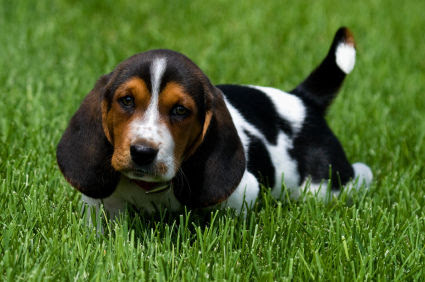Every dog owner is excited to see their dog wagging their tail. The common belief is that dogs wag their tails because they are happy. It is seen by most as a happy, friendly gesture that means the dog is in a good mood (as opposed to cats, who it usually means they are in a foul mood). However, the exact reasons for why dogs wag their tails is not actually known.
Dogs who were wagging their tails have bitten people, barked, or otherwise acted aggressive. So what exactly does it mean when dogs wag their tails? Dogs rely heavily on body language to communicate; more so than vocal communication. While cats can move their tails in a variety of ways, dogs do not have the same luxury. Their tails, by nature, are sturdier than cat’s tails. This is especially true of water dogs, whose tails tends to be very thick and can even damage things with it’s wagging.
Due to their thicker tails, it can be hard for us, as dog owners, to interpret what their wagging tail means. There are some common beliefs on why a dog wags their tail, all of which are plausible, but none of which are entirely fact.
The most common reason that dogs wag their tails is that they are excited. Most dog owners translate this into happy, but excitement translates into energy. Dogs with too much energy can be like a child on a sugar high. Lots of things to do, lots of energy and their outlet is their tail. With this theory, a dog can be wagging its tail because it is very happy to see you, or it could be wagging its tail because it is full of energy (which may be good or bad).
Another common theory is that tail wagging is a sign of submission. While this theory generally can be seen as holding true in domesticated dogs, with wild dogs, such as wolves, it quickly falls apart. Wolves are often seen wagging tails in a variety of situations; when a mother feeds it’s pups, all tails are wagging. While the pups are submissive to their mother, the reverse is not true.
Therefore, another possible explanation for tail wagging is that it is more similar to cats’. It is an all purpose means of communication; various tail positions, in conjunction with other body language, conveys the real message. This theory is becoming more commonly accepted, as people are learning how to read the dog’s body language.
A tail that is high in the air and waving, often times just the tip of the tail, means that the dog is feeling dominant. This can easily translate into aggressive behavior. A dog that feels dominant and feels that you are testing that may attack. If the dog is growling, with it’s hackles raised, or with it’s ears back, then it is a sure sign of aggression.
On the other hand, if a dog has it’s tail lowered, or between it’s leg and wagging, it is seen as a submissive gesture. A lowered or tucked tail is always seen as submissive in dogs, but the addition of wagging makes it more of a pleading gesture rather than simply fear. This gesture is common with dogs who know that they’ve done something wrong and are trying to get away with it.
A tail that is straight out and wagging is, however, accepted as being friendly. This is the most commonly seen form, and where most of the beliefs that a wagging tail only means a happy dog comes from. Most dogs will do this when you return home from work, or when you are outside playing with them.
When dogs are meeting each other, or a new human, it’s common to see the tail slightly lower or higher than the usual ‘happy’ position. This is an indicator of testing the other dog to establish dominance. Dogs who are used to be the dominant dog will keep their tail a bit higher, while those that are used to being the submissive dog will keep their tail lower.
While there are other theories, they are not as prevalent, and there is debate among breeds how true the meaning or reasons for tail wagging is. Dogs with curled tails, such as Akita Inu, and Basenji, are more difficult to understand through tail communication. So whatever the reason really is that dogs wag their tails, whether it is as varied as some believe or not, it is important to know that it is not simply a happy gesture.






0 Komentar